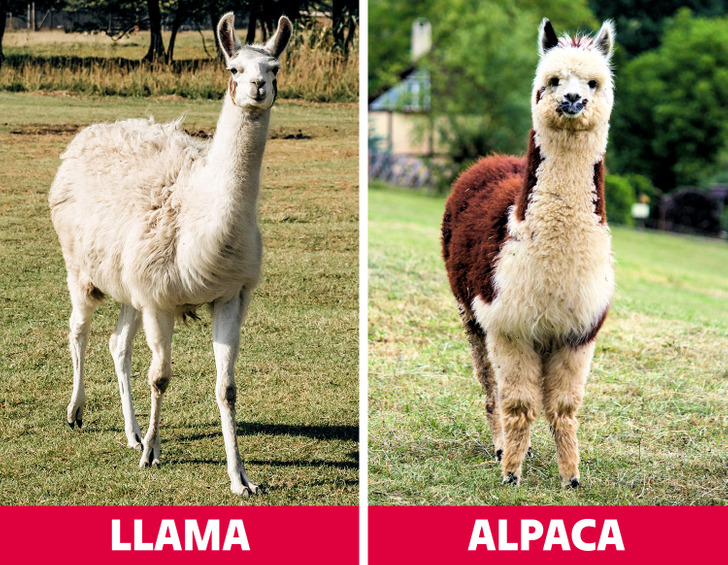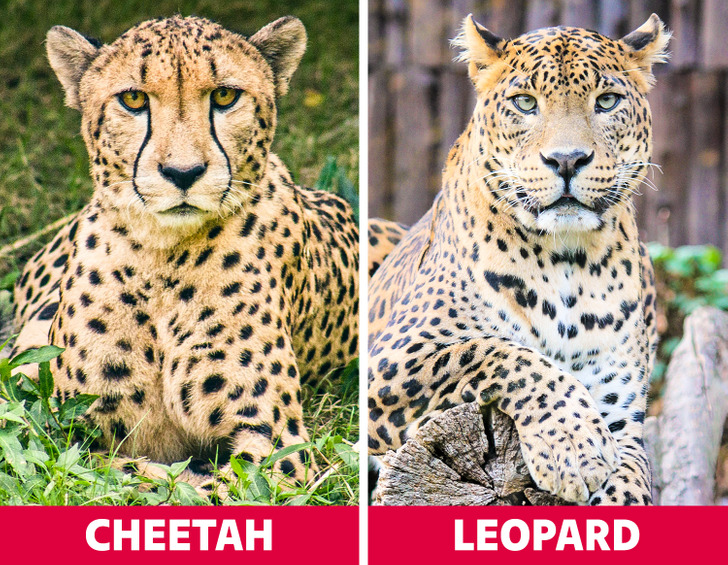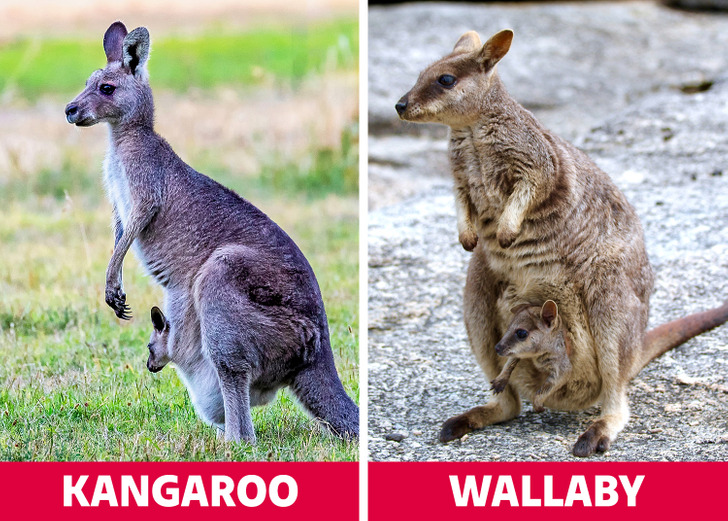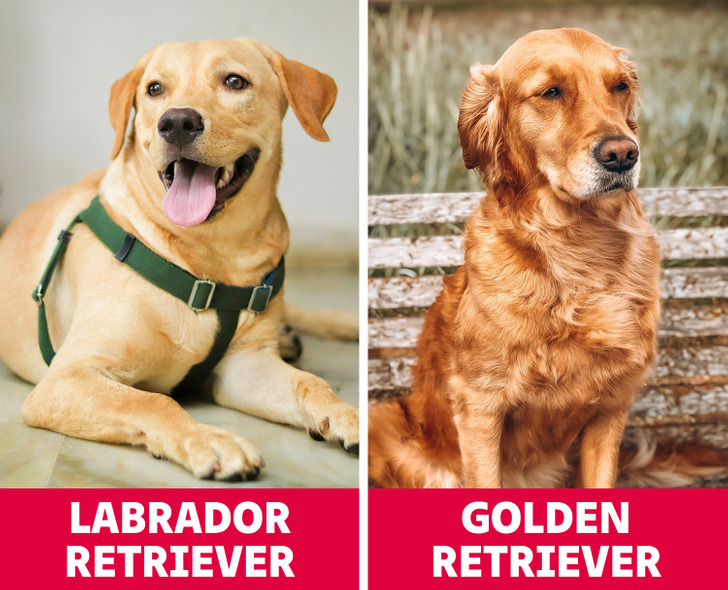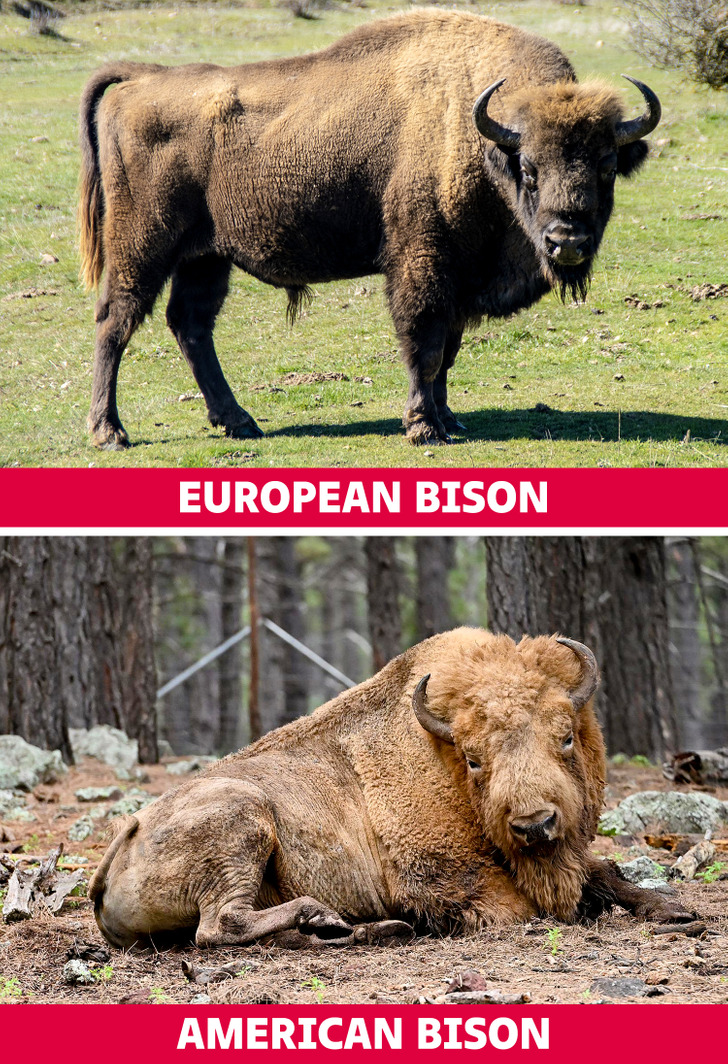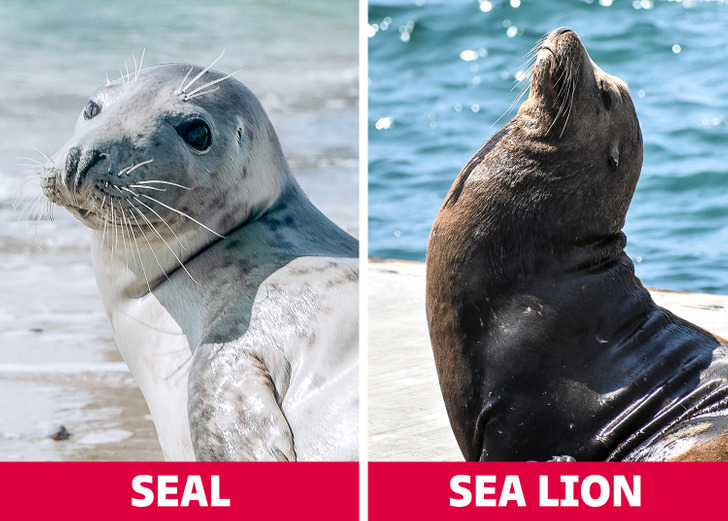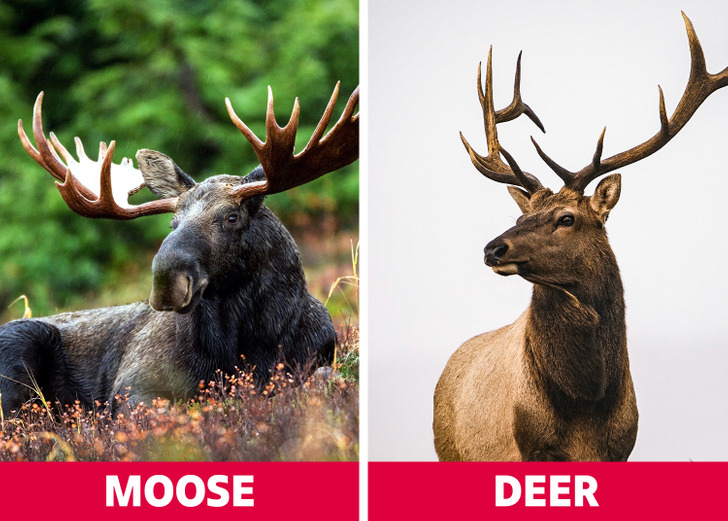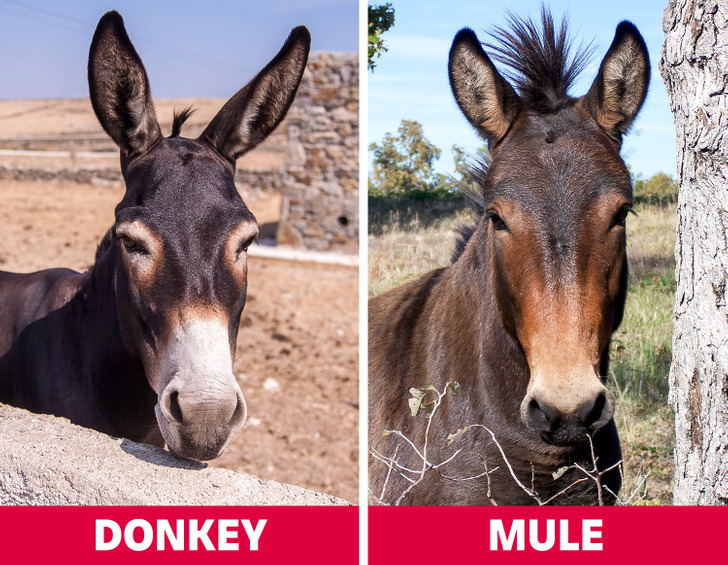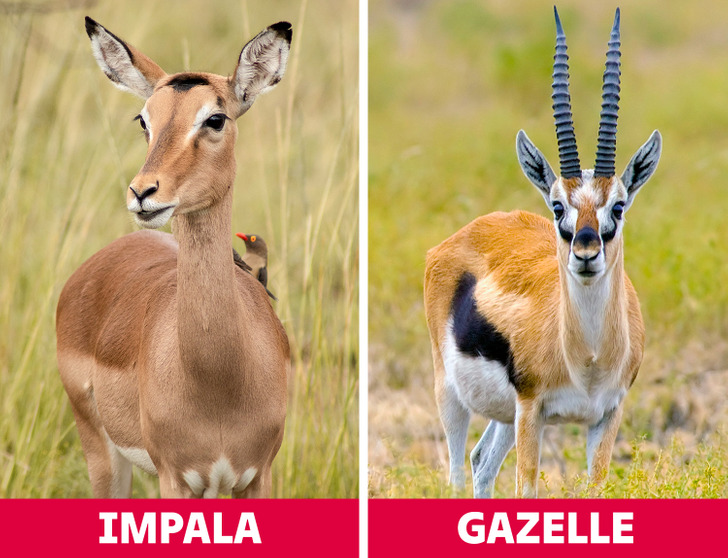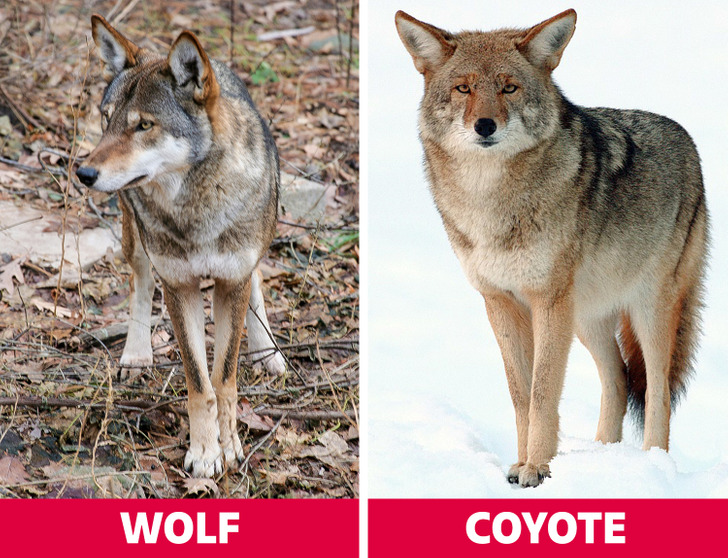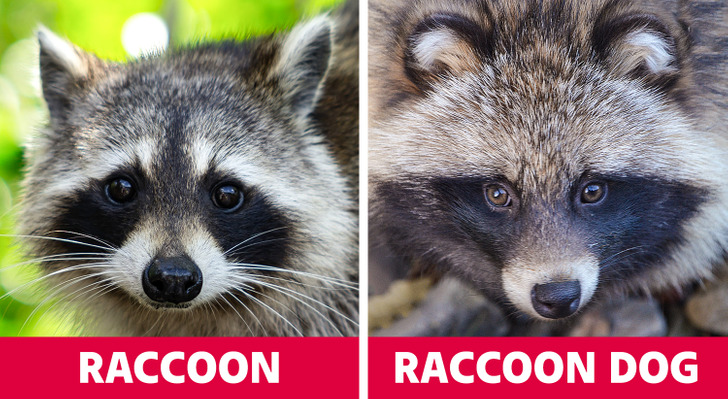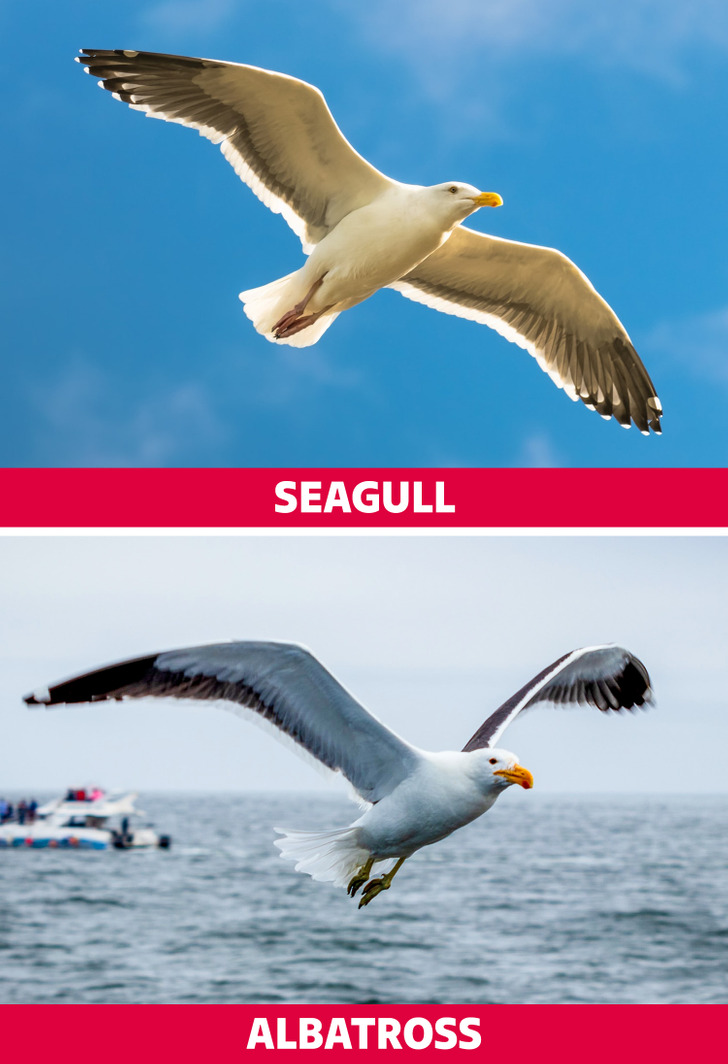12 Pairs of Animals We Tend to Confuse All the Time
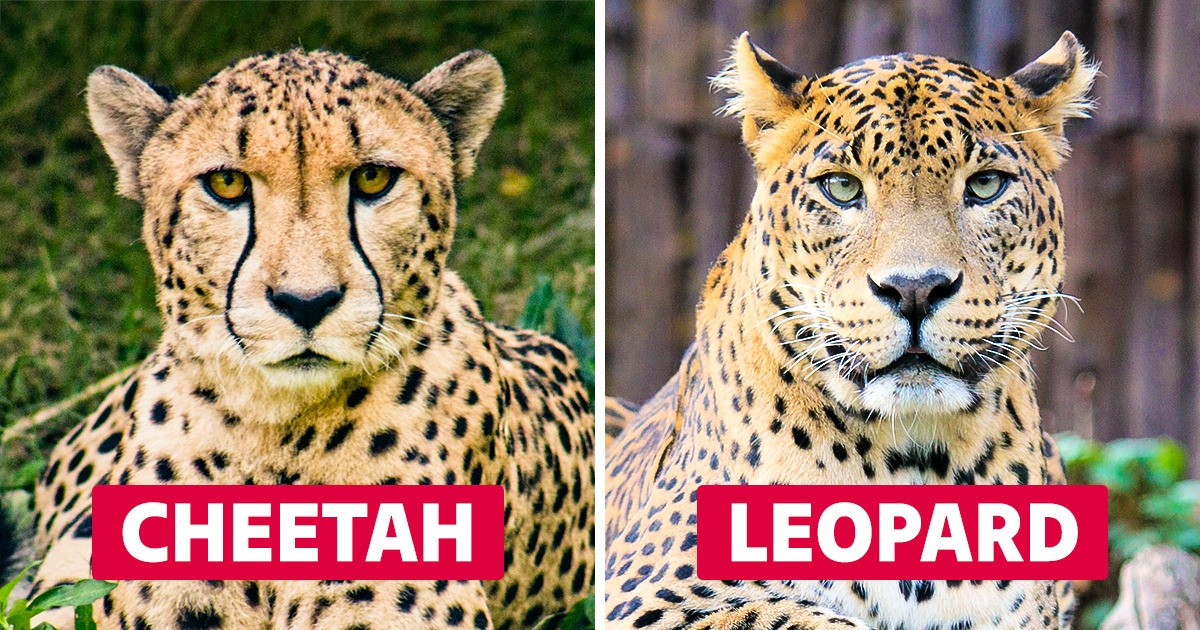
With all its diversity, nature often repeats itself. There are animals that seem to belong to different categories, yet look like twins. In fact, they often do belong to the same biological order or family! However, multiple millennia of evolution has divided them into different species. As a result, they have acquired different behavioral patterns and, if you look closely, physical details.
At CHEERY, we found 12 pairs of animals which are commonly confused. But despite their external similarities, they are still different animals.
1. Llama vs alpaca
Llamas and alpacas both belong to the camelid family and live in South America, mainly in the Andes. Llamas form a genus of the same name, and alpacas belong to it. You can say that alpacas are also llamas, and this is why they look alike. But here’s how they are different:
- Alpacas are shorter than llamas. They reach a height of 30-35 inches, while llamas are 40-50 inches tall.
- Alpacas have a small face and nose, short ears and legs, and shaggy soft wool, while llamas have an elongated snout and nose, large ears, long legs, and coarse wool.
- Both animals are calm and social. But alpacas spit if they feel threatened, while llamas can become very aggressive in stressful situations.
2. Cheetah vs leopard
The cheetah and leopard are large cats and among Africa’s major predators. Both animals have dark spots covering their tan fur, but their spots differ. The cheetah’s spots are evenly spaced, and have an oval or round shape, while the leopard’s spots are called rosettes. These 2 animals also differ in the following ways:
- Cheetahs are taller than leopards, ranging from 26-37 inches tall. The leopard’s height varies from 23.6-27.6 inches.
- At the same time, leopards are the heavier of the two. They weigh between 81.6-198.4 lbs, while cheetahs weigh between 46-159 lbs.
- Leopards live in savannas and forests, while cheetahs live in grasslands and deserts.
- Leopards are nocturnal, while cheetahs are diurnal.
- Leopards are muscular, with a broad head and legs. Cheetahs, on the other hand, have a long, slender, and flexible body, and their head is small and rather short in relation to the body.
- Leopards are stronger than cheetahs, but cheetahs are faster. They are the fastest land animals on Earth.
3. Kangaroo vs wallaby
Wallabies and kangaroos are the most recognizable marsupials of Australia. Although they both belong to the same family, they are still very different:
- Kangaroos are larger than wallabies. The kangaroo weighs an average of 110-145 lbs, while the wallaby weighs only around 24 lbs.
- Kangaroos have powerful and long legs, while those of a wallaby are small and short.
- The body of a kangaroo is large with a powerful tail, while that of a wallaby is short with a small tail.
- Kangaroos have dull fur, while wallabies have a shiny coat.
- Kangaroos live in savannahs and open woodlands, while wallabies prefer forests with dense shrubbery.
4. Labrador Retriever vs Golden Retriever
Labrador Retrievers and Golden Retrievers look very much alike. It seems that it’s very difficult to distinguish these 2 dog breeds, but the following features will help you with this:
- The Labrador Retriever has a broad muzzle, while the Golden Retriever has a narrow muzzle.
- The Labrador Retriever has a short, dense and coarse coat, while the Golden Retriever has a long coat with a soft, feathery undercoat.
- The Labrador Retriever has a pointy tail, while the Golden Retriever has a fluffy one.
- Both dogs are outgoing and friendly. But the Labrador Retriever is more noisy, while the Golden Retriever is prone to be calmer.
5. European bison vs American bison
The European bison and the American bison belong to the same biological genus of Bison. Their main difference is that the European bison inhabits Europe while the American bison lives in North America. These 2 animals are also slightly different in appearance:
- The European bison is taller than the American bison. The European bison is 78 inches tall while the American bison is 60-73 inches tall.
- The American bison has shorter, curvier, sharper horns than the European bison, whose horns point forward. The American bison’s horns are about 24 inches long, while those of the European bison are about 31 inches long.
- The American bison has shorter legs than the European bison.
- The American bison has longer hair on the neck, head and forequarters than the European bison. But the European bison has more hair on the tail.
6. Seal vs sea lion
Seals and sea lions are related. Together with walruses, fur seals and elephant seals, they are both pinnipeds. These 2 species differ in appearance and behavior:
- Seals have short flippers and a small body, while sea lions have long flippers and a massive body.
- Sea lions have small ears, while seals only have small holes on the sides of their heads.
- There are some differences in their behavior too. Thanks to their large flippers, sea lions move freely both on land and in water. But seals are active mainly in water, and on land they are not so mobile.
7. Moose vs deer
Moose and deer are also related, just like other animals that look alike. Together with the fallow deer and the roe deer, they belong to the artiodactyl family Cervidae. But there are key differences between them:
- The moose is the largest member of the family. On average, an adult moose stands 4 ft 7 inches to 6 ft 11 inches high at the shoulder, while a red deer’s shoulder height is about 37-51 inches.
- Moose are distinguished by wide and massive antlers whose span can reach 79 inches, and weight can reach 79 lbs. In deer, the antlers are usually thin and branching. On average, they grow up to 28 inches and weigh 2.2 lbs. Although some red dear can grow antlers up to 45 inches long and 11 lbs in weight.
- There is also a difference in the social behavior of these animals. Moose prefer to live alone and seek the company of others only during the mating season. Deer, on the other hand, form small or rather large herds on a permanent basis.
8. Donkey vs mule
The donkey and the mule differ from each other in origin. The donkey is the offspring of a jack and jenny, while the mule is the offspring of a male donkey and a mare. Thus, the mule is a hybrid. This is what makes these 2 species look different:
- Mules are usually larger and taller than donkeys. Their height at the withers varies from 50 inches to 70 inches. While the donkey’s height ranges from 35-59 inches.
- Donkeys have wide, long ears. The ears of the mule are smaller, and more like those of a horse.
- The mule has a horse tail, which consists of long and thick hairs falling from the tailbone. Donkeys have a long and thin tail with a tuft of hair on the end.
9. Impala vs gazelle
Impalas and gazelles belong to the bovid family. These 2 species are mainly different by their appearance. For example, if we compare the impala with Thompson’s gazelle, the differences will be as follows:
- The impala is bigger than the gazelle. It can reach 30-36 inches in height and weigh between 117-168 lbs. The gazelle stands 24-28 inches at the shoulders and weighs 44-75 lbs.
- The impala has reddish-brown coloration, pale belly and a light muzzle with white rings around the eyes. The coat of the gazelle varies from sandy brown to red with a dark stripe along the body. The face also has white rings around the eyes, but there are black lateral stripes that run from the corners of the eyes to the nose, and red stripes that run from the horns to the nose.
- Only male impalas have horns. In gazelles, horns develop in both males and females.
10. Red wolf vs coyote
Wolves and coyotes are different species that, together with jackals and dogs, form the genus of the Caninae. Since these species are closely related, it’s easy to confuse them—especially the red wolf and the coyote, which have a similar coat color. But they also have some differences:
- The coyote is smaller than the wolf. The coyote grows up to 35 inches long while the wolf reaches 47 inches in length. At the same time, their height is approximately the same, reaching up to 26 inches. The weight of the coyote is also less, reaching up to 45 lbs, while the body of the wolf is quite massive, reaching up to 90 lbs.
- The howl of a coyote is intermittent and sounds like yapping. The wolf produces a long howl.
- The coyote has a long and narrow muzzle, while the red wolf has a short and thick one.
- The color of the red wolf is distinguished by red hues, while the coyote’s coat is yellowish-brown.
11. Raccoon vs raccoon dog
Unlike other pairs mentioned in our article, the raccoon and the raccoon dog are not related. They just happened to look alike. The raccoon belongs to the procyonid family, and the raccoon dog closely related to foxes.
It’s easy to confuse the raccoon and the raccoon dog. They have almost the same dark spots around the eyes, a small black nose, and a light-colored muzzle. Their weight, length, and height are also about the same. However, there are features by which you can distinguish them:
- The raccoon has a gray-black fur coat with patches of light gray, while the raccoon dog has dark brown undertones and tan underside.
- The raccoon has pointed ears, while the raccoon dog has wide and round ears.
- The raccoon has a striped tail, while the raccoon dog has a tail of solid dark color.
- Unlike the paws of the raccoon dog, the paws of the raccoon are very dexterous. It uses them for eating and grooming.
- Raccoons live in North and South America, as well as in Western Europe. Raccoon dogs are widespread throughout Eurasia.
12. Seagull vs albatross
The seagull and the albatross are not related either, they share only the habitat — both species can often be seen at the sea. They are also easy to be confused because they have similar plumage and beak structure. But these features will help you distinguish them:
- Albatrosses are larger than seagulls. They can weigh up to 22 lbs, while seagulls weigh only up to 4 lbs.
- The wingspan of albatrosses is also larger, ranging from 6.5-11 feet. The wingspan of seagulls is only 2-5 feet.
- Seagulls are omnivores, while albatrosses are carnivorous.
- Seagulls can be found everywhere, but albatrosses can only be found in the Southern Hemisphere, on the coast of the Southern and Pacific Oceans.
Do you know any other animals that look alike? Tell us about them in the comments below.
